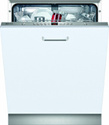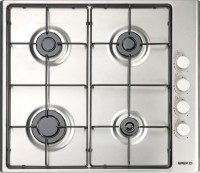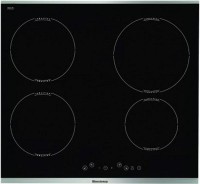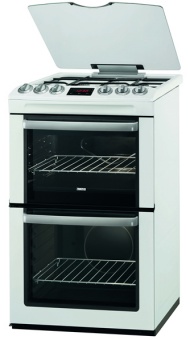Electric Cookers VS Gas Cookers.
When it comes to buying a cooker now you are left with 2 choices for the fuel type for the oven cavities (gas or electric) and 3 choices for the fuel type of the hob (gas, electric and induction). There's no universal answer as to which fuel type you should choose as for the most part it boils down to a personal preference, but over the course of the article we're going to highlight some of the pros and cons of each type to help in making your decision.
Installation
Before you can use your cooker it would need to be installed and if you choose a cooker with a gas element to it (weather it be the hob or the oven) then it will need to be installed by a gas safe registered engineer. Installation alone for a gas appliance can easily cost upwards of £100 whereas installation for an electric cooker would only cost about half the price. If you have your heart set on a gas appliance then the additional cost will be worth it, but if your on the fence about which to go for the extra saving may just be enough to sway your decision.
Which Hob Type Is Right For Me?
When it comes to the cooking ability, it gets a bit more complex as there are 2 fuel types but 4 hob types (Gas, Ceramic, Induction and Solid Plate) to choose between now, each with their own benefits. If you find yourself cooking lots of wok based dishes (such as stir fry) then you'll find that a gas hob will be irreplaceable. This is thanks to the way the gas flame curves around the pan allowing it to be fully heated, not just the base. In comparison an electric ceramic and induction hob will only be able to heat the flat base of the pan that sits on the hob ring. Another benefit that gas has over both electric types of fuel is that you not only have more control over the power level of the flame (meaning you can go down to lower temperatures and 'simmer' more efficiently), but you can also tell the power level visually from the flame alone.
If you don't find yourself cooking with a wok then you might find Induction to be a far superior choice to gas. Due to the technology behind an induction hob it allows the pan (and by extension the food/liquid inside the pan) to be heated up far quicker than either a gas or ceramic hob can achieve.
Another benefit with an Induction hob is the fact it is the safest method of all 3. Due to the pan being heated directly instead of the heat being transferred from the heating element, to the hob cooking zone then to the pan, it means that although the pan heats up the hob top itself doesn't reach the same temperature that a normal ceramic or gas hob would. Once you have cooked something on the hob then there will be some residual heat transferred from the pan to the hob base but this will be fairly minimal. Once the pan is removed the hob itself is still normally able to be touched without injury, or at the worst would only take a minute to cool down to a cool enough level to touch. We don't recommend touching it immediately after as there will be some heat left over, but it does mean that if it is touched accidentally you won't run the risk of being burnt as you do with other fuel types.
The induction technology also only heats when a pan is placed on top of the hob, so if you have the hob turned on without a pan on it, you can still touch the cooking zone without injury.
The last 2 types of hobs are ceramic and solid plate hobs. Both choices are fairly cheap (both to buy and install), but in general a ceramic is a more popular choice. Solid plate tend to be slightly cheaper, making them popular for tenanted properties, but as the cost is fairly minimal we would recommend going for ceramic over solid plate whenever possible. Ceramics are easier to clean than a solid plater, heat up faster and can give you more cooking and safety options so the only real choice to choose a solid plate is the reduced cost.
So How Does The Oven Compare?
As Induction is a hob only technology that simplifies the oven choice as you are just left with either electric or gas. Electric fuel is currently the more popular fuel type when it comes to the oven for a few reasons.
With most modern electric ovens you will find they are fan assisted, which means the air is heated inside the oven and then moved around the cavity by the fan keeping an even heat throughout. In comparison a gas oven is more likely to have hot and cold spots throughout the cavity which can lead to uneven cooking.
You will also find that electric ovens will tend to be more consistent with their cooking results as the temperature is able to be kept more steady and consistent throughout the cooking cycle. In addition to these electric ovens also tend to have more cooking functions/programs which lead to an easier and more user friendly experience
A gas oven isn't without it's advantages though. Due to the way the heating works in a gas oven, once you turn it on the flame ignites immediately and heats the oven up to temperature in no time. Not only is this good for saving time (which is essential in today's busy life styles) but also makes it a more energy efficient option as it needs to spend less time on to heat compared to electric.
The second main appeal most find with a gas oven is that you tend to get more 'moist' cooking results compared to electric. This is especially good for baking cakes but can be beneficial for other dish types too.
Overview - An Easy Comparison
Although the above gives a more detailed overview of the differences between the 2 fuel types, you can find a quick overview below to give you an at a glance difference between the fuel types available.
Gas Hob:
- Superior for wok based dishes.
- More precise control of the flame compared to electric.
- No pan restrictions.
Electric Induction Hob:
- Fast heating.
- Cheap to install.
- Safest option of all the fuel types.
Electric Ceramic Hob:
- Easy to clean.
- Cheap to buy and install.
- Visually appealing as they sit flush in the worktop.
Gas Oven:
- Can give more moist cooking results over electric.
- Faster to heat & adjust the temperature compared to electric.
Electric Oven:
- Even heating in the oven cavity.
- More consistent results.
- More cooking programmes/features.
























